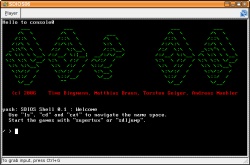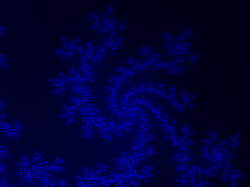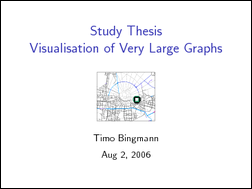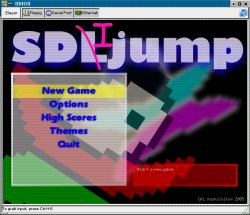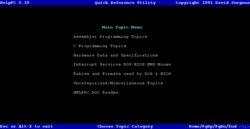Heute habe ich meine Studienarbeit "Visualisierung sehr großer Graphen" am Institut für Theoretische Informatik fertig gestellt und abgegeben. Die Studienarbeit ist eine 3-4 monatige wissenschaftliche Arbeit und dient als Vorbereitung auf die Diplomarbeit.
Die Studienarbeit kann zum Durchlesen als PDF (2,4 MB) herunter geladen werden. Auf diesen Abschnitt folgenden die deutsche und englische Zusammenfassung der Arbeit. Weiter gibt es eine Version zum Ausdrucken (PDF 15,3 MB) mit einer hochauflösenden Vektorgraphik im Anhang.
Zusammenfassung
In dieser Studienarbeit wird untersucht, mit welchen Methoden sehr große Graphen wie ein Straßennetzwerk von Europa effizient und komfortabel visualisiert werden können. Als Ausarbeitung entsteht ein C++ Rahmenwerk für die Datenhaltung eines Graphen mit Attributen und ein Java Applet, das mit dem Datenhaltungs-Server mittels CORBA kommuniziert. Das Rahmenwerk kann leicht in bestehende Graphanwendungen integriert werden, um deren Algorithmen zu animieren.
Als Basis-Graphstruktur wird ein Adjazenz-Array verwendet und um Strukturen erweitert, die zu jedem Knoten und jeder Kante beliebig viele Attributwerte speichern. Zwei der Knotenattribute werden als Zeichenkoordinaten verwendet. Der Grundgraph und die Datenhaltung der Attributwerte wird auf möglichst kompakte Art und Weise gelöst. Graphanwendungen können eine Liste von temporären Änderungen erzeugen, die mit dem großen globalen Graphen zusammengeführt werden können. Um das Vorgehen der Graph-Algorithmen zu visualisieren, werden deren Funktionsaufrufe in einer Änderungsfolge kodiert, welche als Animation zum Java Client übertragen wird.
Um die Geschwindigkeit einer Ausschnittsanfrage zu erhöhen, wird die mehrdimensionale Indexstruktur R-Tree verwendet. Diese ermöglicht Anfragezeiten, die linear zur Anzahl der zurückgelieferten Kanten und unabhängig vom gewählten Ausschnitt sind. Es können komplexe Filterausdrücke aus Vergleichsbedingungen mit boolschen und arithmetische Operatoren verwendet werden, um die angezeigten Kanten in einem Visualisierungsauschnitt einzuschränken und so komfortabel bestimmte Aspekte der Anwendungs-Algorithmen zu untersuchen oder hervorzuheben.
Als Referenzanwendung wird das Rahmenwerk von der am Institut für Theoretische Informatik in Karlsruhe entwickelten Routenplanungsanwendung zur Visualisiserung mittels Web Applet verwendet.
Abstract
This study thesis investigates and implements methods used to efficiently visualize very large graphs like a street network of Europe. A C++ server framework is designed, which implements a data management library for graphs with attributes. A Java applet communicates with the data server via CORBA and draws sections of the graph. The graph data management library can easily be integrated into existing graph application to visual and animate calculations.
The data management library uses the adjacency array structure for representing the base graph. It is extended by similar data structures to hold an arbitrary number of attributes for each vertex and edge. The data structures are optimized towards highest storage efficiency. To modify the static global graph an application may construct a list of changes, which are efficiently merged into permanent data storage. To visualize the workings of an algorithm its function call sequence can be recorded into a list of graph changes. This change time line can be transfered to the Java client and displayed as an animation.
To accelerate access to arbitrary sections of the graph the spatial index structure R-Tree is used. It enables query times to linearly increase with the number of returned edges and be independent of the section size or position.
Furthermore complex filter expressions including comparisons and arithmetic operators can be applied to limit the displayed edges. This enables the client to explore the graph's details comfortably and highlight interesting aspects of an algorithm.
The graph data management library is used in a route planning application, which is being developed in a research group of the University of Karlsruhe. It will be used to visualize the route using a web applet.

